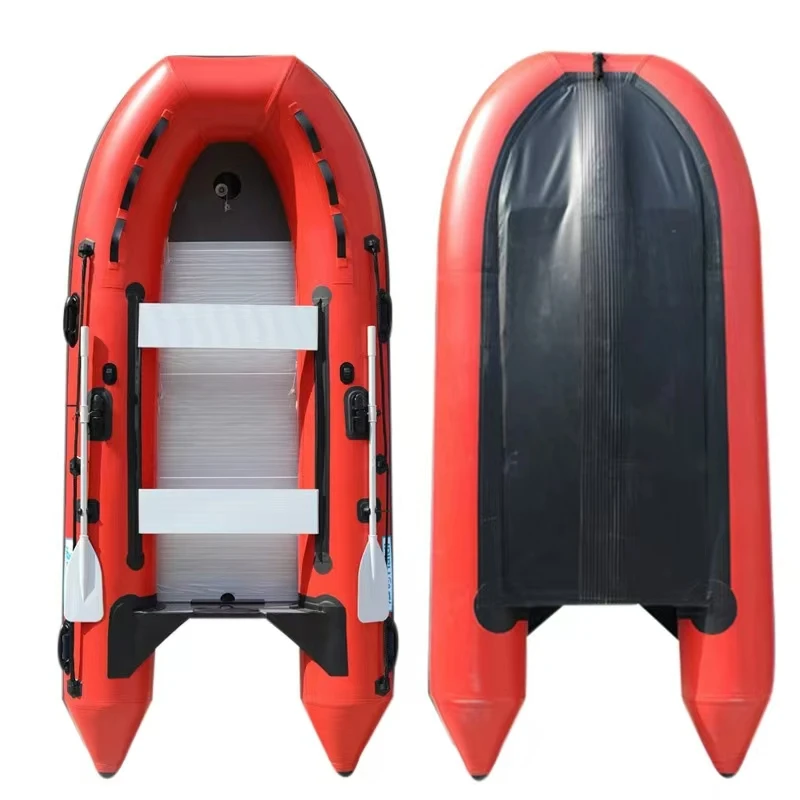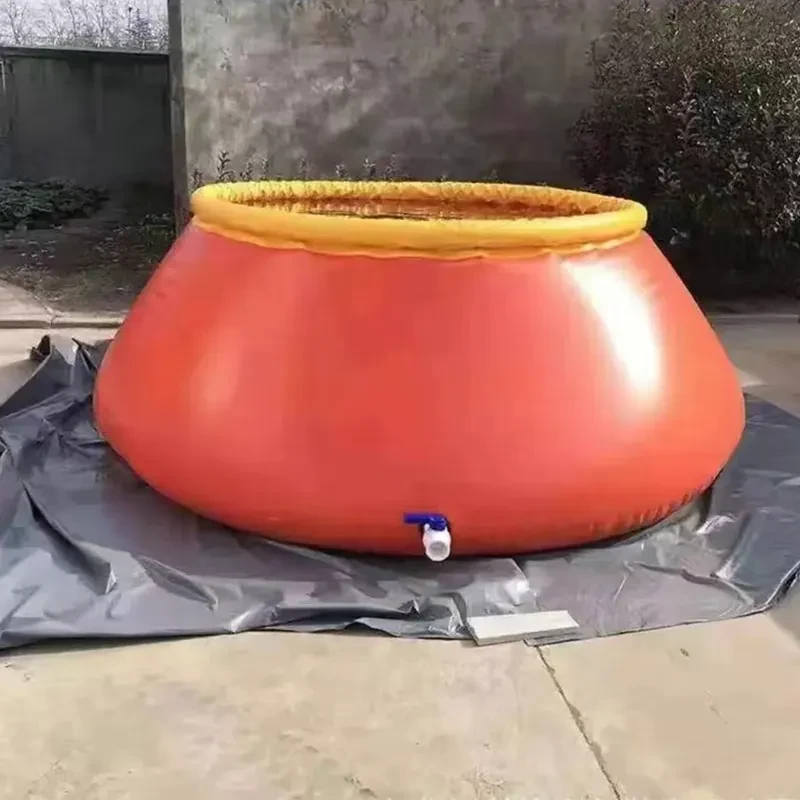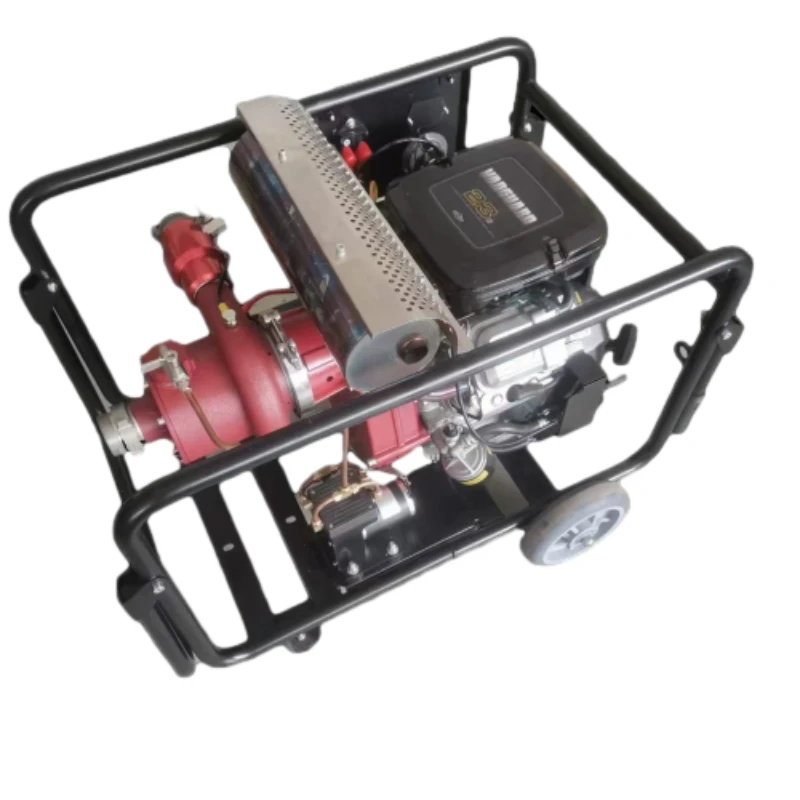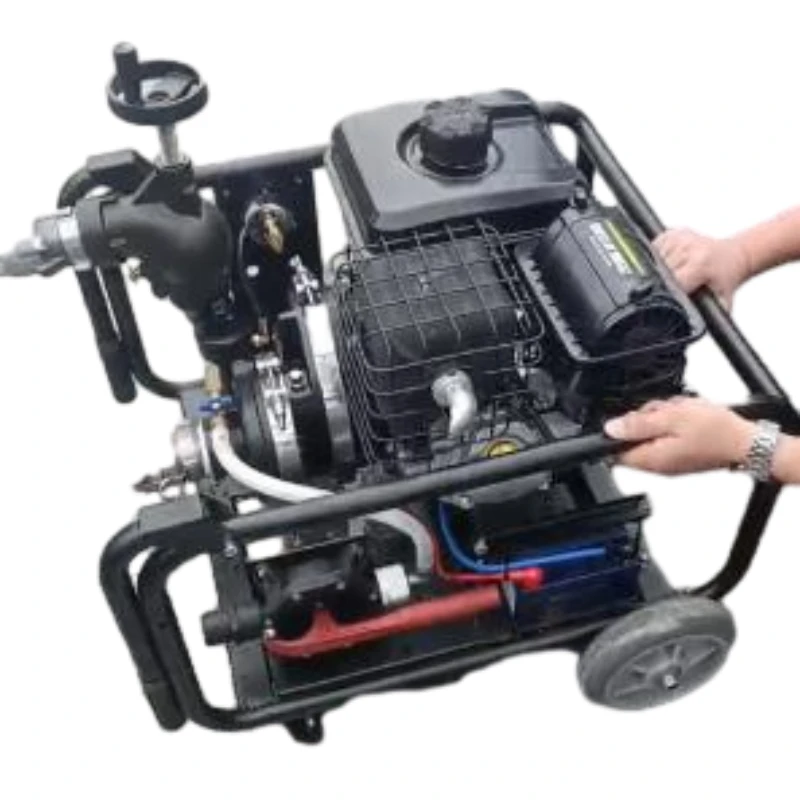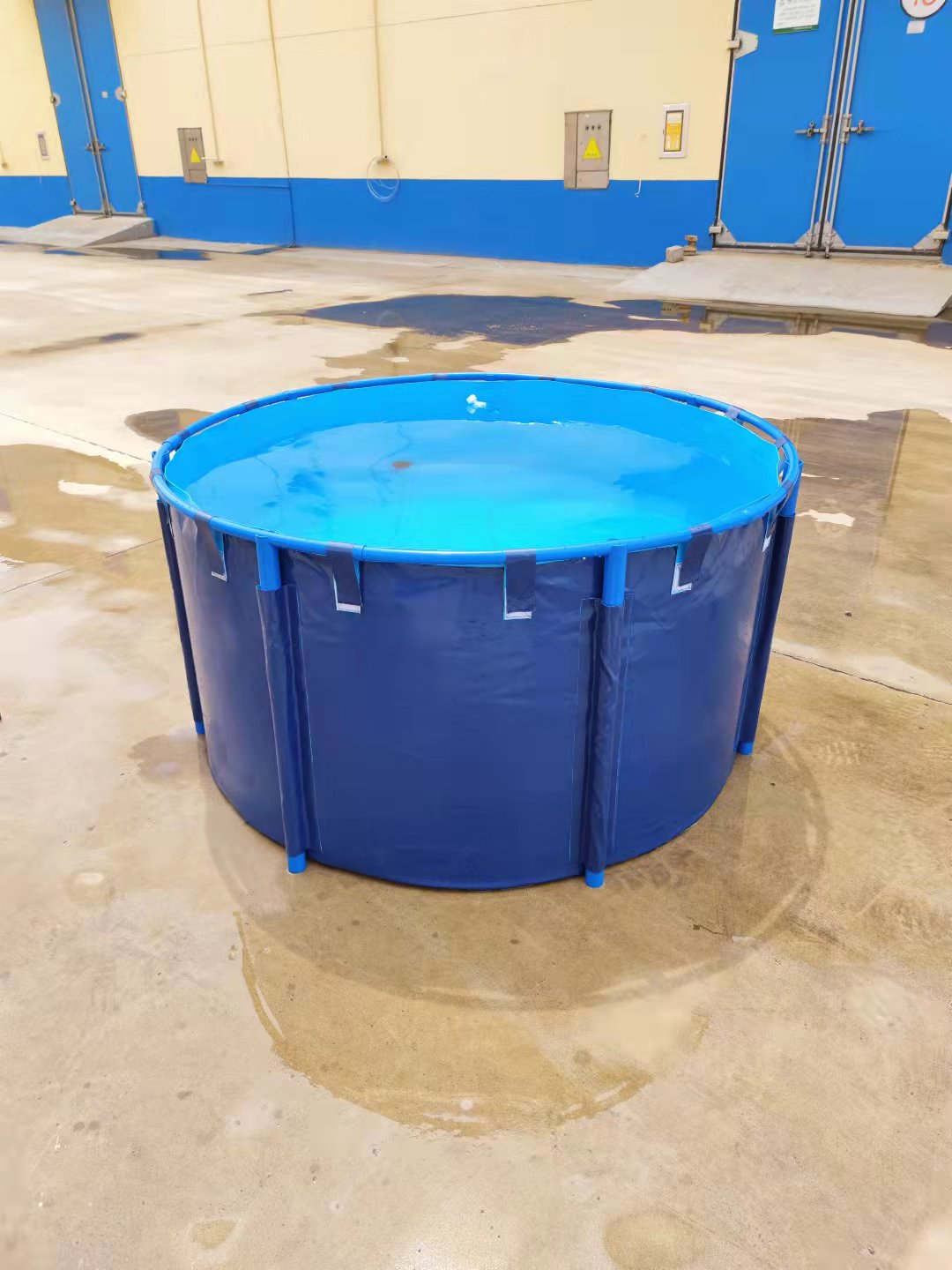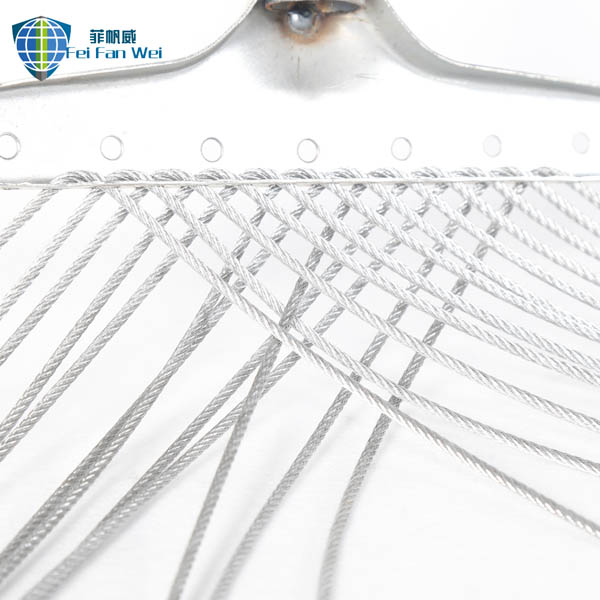Introduction to Advanced Portable Fire Suppression
In high-stakes environments where immediate and localized fire response is critical, the role of portable suppression equipment cannot be overstated. Among these, the Fire Fighting Knapsack stands out as an indispensable tool for initial attack and rapid containment. Engineered for ergonomic portability and robust performance, these knapsacks empower first responders, forest fire crews, and industrial personnel to address nascent fires efficiently, often preventing escalation into larger, more devastating incidents. This comprehensive overview delves into the technical intricacies, market relevance, and operational benefits of modern fire fighting knapsack systems, demonstrating their crucial role in contemporary safety protocols.
Industry Trends and Market Dynamics
The global market for fire suppression equipment is experiencing significant growth, driven by increasing industrialization, urbanization, and stricter safety regulations worldwide. The segment for portable fire fighting solutions, particularly the Fire Fighting Knapsack, is seeing innovation focused on lighter materials, enhanced ergonomics, and multi-functional capabilities to meet evolving operational demands. Key trends shaping this market include:
- Lightweight Composites: Increasing adoption of advanced polymers and carbon fiber reinforced plastics for tank construction. This reduces overall unit weight, significantly improving user mobility and reducing fatigue during prolonged operations in challenging terrains.
- Integrated Pumping Systems: Development of more efficient, often battery-powered or advanced hand-operated piston/diaphragm pumps. These offer consistent pressure, higher flow rates, and varied spray patterns, moving beyond basic manual pump designs to enhance suppression efficacy.
- Smart Features and Connectivity: Emergence of knapsacks with integrated pressure gauges, real-time water level indicators, and even potential for GPS tracking or data logging for better operational oversight and resource management in large-scale fire management.
- Eco-friendly Materials and Design: A growing focus on utilizing recyclable, non-toxic, and sustainably sourced materials for tanks, hoses, and other components, aligning with global environmental protection initiatives and corporate social responsibility goals.
- Versatile Extinguishing Agents: While water remains the primary agent, many systems are now designed for easy integration with Class A foams or other specialized fire retardant additives. This enhances fire suppression effectiveness for specific fuel types and scenarios, such as wildland fires or industrial material fires.
According to recent market analysis data from Grand View Research, the global portable fire extinguisher market, which includes segments like the Fire Fighting Knapsack, is projected to reach USD 9.5 billion by 2030, with a Compound Annual Growth Rate (CAGR) of 6.2% from 2022 to 2030. This robust growth underscores the critical and expanding demand for agile, effective initial response tools in sectors ranging from forestry and agriculture to heavy industry and emergency services worldwide.
Manufacturing Process of the Fire Fighting Knapsack
The production of a high-quality Fire Fighting Knapsack involves a multi-stage, precision-driven manufacturing process designed to ensure unparalleled durability, reliability, and optimal performance under the most demanding conditions. Adherence to international quality management standards like ISO 9001 and specific fire safety equipment norms is paramount at every step.
Key Manufacturing Stages:
-
1. Material Selection & Preparation:
The selection of raw materials is critical for the knapsack's performance and longevity. The primary material for the water tank is typically high-density polyethylene (HDPE) or a durable, UV-resistant polypropylene. These polymers are chosen for their lightweight properties, exceptional corrosion resistance, and high impact strength. For pump components, materials such as brass or stainless steel (e.g., SS304 or SS316) are preferred due to their superior corrosion resistance, mechanical integrity, and wear resistance. Straps and harnesses are fabricated from heavy-duty nylon or polyester webbing, designed for maximum comfort, load distribution, and resistance to abrasion and UV degradation.
Material Specification Highlight:- Tank Material: Virgin, UV-stabilized HDPE, often food-grade compliant to ensure water purity and prevent degradation.
- Pump Body & Plunger: High-strength Brass or Stainless Steel 304/316 for chemical and corrosion resistance.
- Hose: Reinforced PVC or high-grade rubber, rated for high pressure, flexibility, and abrasion resistance.
- Seals: Durable Viton or EPDM for chemical compatibility and leak-proof operation.
-
2. Tank Molding (Rotational Molding/Blow Molding):
For HDPE tanks, rotational molding is a widely adopted technique. This process creates a seamless, single-piece tank with uniform wall thickness, eliminating weak points and ensuring a completely leak-proof construction. The result is superior structural integrity and resilience against physical impacts. For specific design geometries or higher volume production, blow molding may be employed, offering efficient manufacturing while maintaining critical strength parameters. These processes are crucial for the tank's resilience against physical stresses, UV radiation, and chemical degradation.
-
3. Pump Assembly & Precision Machining:
The pump mechanism is the heart of the Fire Fighting Knapsack. Components such as the piston, cylinder, valve body, and nozzle are often manufactured through advanced CNC machining, especially for brass and stainless steel parts. This process guarantees extremely tight tolerances, critical for consistent pressure, reliable flow rates, and efficient operation. In some cases, forging may be used for critical, high-stress pump components to enhance material density and inherent strength, reducing the likelihood of failure under operational strain. These precision components are then meticulously assembled and sealed to prevent leakage and ensure optimal performance.
-
4. Harness & Accessory Fabrication:
The ergonomic harness system is fabricated with user comfort and load distribution in mind. Heavy-duty webbing is cut, stitched, and reinforced, often incorporating strategically placed padding for shoulders and back support. All buckles, adjusters, and connectors are selected for their robust durability and ease of manipulation, even when operators are wearing heavy gloves. Ancillary components, including high-capacity fill caps, integrated strainers/filters, and robust carrying handles, are manufactured and integrated to complete the knapsack's functionality.
-
5. Quality Control & Rigorous Testing:
Each completed Fire Fighting Knapsack undergoes a stringent series of quality control checks and performance tests. This includes hydrostatic pressure testing of both the tank and the hose assemblies to verify structural integrity and detect any potential leaks. Pump performance testing evaluates flow rate consistency, maximum pressure output, and spray pattern integrity (stream vs. fog). Functional checks of all moving parts, ergonomic fittings, and accessory integrations are also performed. Compliance with international standards such as ISO 9001 (Quality Management Systems) and consideration of relevant aspects of NFPA 1901 (Standard for Automotive Fire Apparatus, applicable to portable equipment principles) ensures product safety, reliability, and environmental responsibility through ISO 14001 guidelines where applicable.
Authoritative Testing Standards & Certifications:- ISO 9001: Certification for robust Quality Management Systems, ensuring consistent product quality.
- Internal Hydrostatic Pressure Tests: Tanks and hoses tested typically at 2-3 times their maximum working pressure to ensure safety margins.
- Impact & UV Resistance Tests: Materials and final products are tested to withstand environmental stressors.
- Flow Rate & Pressure Consistency Testing: Ensures pump efficiency meets specified performance curves.
-
6. Final Assembly & Packaging:
The final stages involve careful assembly of all tested components, application of product labeling (including safety warnings and operational instructions), and protective packaging for shipment. This ensures the product arrives at the customer's location in pristine condition, ready for immediate deployment. The meticulous design and manufacturing process, using high-grade materials and strict quality control, contribute significantly to a longer typical service life, often exceeding 10 years with proper maintenance. This extended lifespan offers substantial advantages in target industries such as petrochemical, metallurgy, and water supply & drainage, providing long-term, reliable fire protection and superior cost-effectiveness due to reduced replacement cycles. Technical advantages derived include enhanced corrosion resistance through specialized material selection (e.g., SS316 for highly corrosive environments), and superior energy saving via efficient, ergonomically designed manual pump mechanisms that minimize operator exertion while maximizing effective water delivery.
Technical Specifications & Parameters
Understanding the detailed technical specifications of a Fire Fighting Knapsack is paramount for procurement decision-makers and operational planners seeking optimal performance and reliability. The following table outlines typical parameters for high-performance models available in the market, reflecting industry best practices and engineering standards.
| Parameter | Specification (Typical Range) | Remarks |
|---|---|---|
| Tank Capacity | 18 - 25 Liters (4.75 - 6.6 US Gallons) | Optimized balance between water volume for effective suppression and ergonomic portability for extended use. |
| Operating Pressure (Max) | Up to 10 Bar (145 psi) | Achievable with robust manual piston or electric diaphragm pumps, crucial for throw distance. |
| Flow Rate (Adjustable) | 4 - 6 Liters/minute (1.05 - 1.58 GPM) | Variable via nozzle settings, from solid stream for penetration to wide fog for protection/cooling. |
| Throw Range (Stream) | 8 - 12 meters (26 - 39 ft) | Dependent on pump efficiency, nozzle design, and operator technique; vital for direct attack. |
| Empty Weight (Approx.) | 2.5 - 4.0 kg (5.5 - 8.8 lbs) | Influenced by tank material (e.g., HDPE vs. steel) and pump type (manual vs. battery-powered). |
| Material (Tank) | High-Density Polyethylene (HDPE), UV-stabilized | Ensures lightweight design, high impact resistance, and superior corrosion-proof properties for longevity. |
| Material (Pump) | Solid Brass or Stainless Steel (SS304/SS316) | Chosen for exceptional durability, corrosion resistance, and consistent mechanical operation over time. |
| Harness System | Ergonomic, padded, fully adjustable shoulder straps with chest and/or waist belt. | Designed for optimal weight distribution and operator comfort during prolonged and strenuous fire suppression tasks. |
| Operating Temperature | -20°C to +50°C (-4°F to +122°F) | Ensures reliable operation across diverse environmental conditions. |
These specifications collectively highlight the sophisticated engineering behind reliable portable fire suppression solutions. The meticulous selection of materials like high-density polyethylene for tanks ensures both low overall weight and high resistance to impact, chemical exposure, and UV degradation—critical factors for outdoor and industrial use. Furthermore, the incorporation of precision-machined brass or stainless steel components in the pump mechanism guarantees consistent pressure, robust stream integrity, and a long service life, all of which are crucial for effective fire knockdown and overall user confidence.

Application Scenarios
The inherent versatility and operational agility of the Fire Fighting Knapsack make it suitable for a diverse and extensive range of industries and emergency response situations. Its portability, rapid deployment capabilities, and ease of use are paramount in scenarios where traditional, heavier fire suppression equipment cannot quickly or effectively access the fire source.
- Forestry and Wildland Firefighting: These knapsacks are indispensable for mop-up operations, effective extinguishment of lingering hot spots, and rapid control of small ground fires in rugged, remote, and often inaccessible terrain. Their ability to deliver water precisely and efficiently in these challenging environments is invaluable for preventing fire re-ignition and spread.
- Agricultural Sector: Critical for protecting valuable crops, farm buildings, and expensive machinery from accidental fires, particularly during dry seasons (e.g., harvest) when fire risks are elevated. Quick response with a knapsack can save significant agricultural assets and prevent widespread damage.
- Industrial Facilities (Petrochemical, Metallurgy, Manufacturing): Serves as a crucial first line of defense for the initial containment of small spills, equipment fires, or incidents arising from hot work. Rapid deployment with a knapsack can prevent these nascent fires from escalating before larger, integrated industrial fire suppression systems are fully activated, minimizing potential downtime and damage.
- Construction Sites: Essential for mitigating immediate risks from welding sparks, accidental electrical faults, or the combustion of building materials in their incipient stages. They are particularly effective in areas difficult for vehicles to access, ensuring rapid response across the entire site.
- Rural and Remote Communities: Providing fundamental fire suppression capabilities in areas where municipal fire services might have extended response times due to distance or infrastructure limitations. They empower local residents and volunteer fire brigades with critical initial attack tools.
- Public Utility Infrastructure (Water Supply & Drainage, Electrical Grids): Addressing localized fires around sensitive and critical equipment, such as transformers, pump stations, or control panels. This ensures minimal service disruption and protects vital public assets.
- Event Management & Campsites: Providing portable fire safety for outdoor events, festivals, and remote campsites where fixed fire suppression is impractical.
The Fire Fighting Knapsack excels in scenarios demanding rapid deployment, superior mobility, and precision water delivery. This makes it a cornerstone of proactive fire safety strategies across a broad spectrum of operational landscapes, enhancing overall safety and response readiness.
Key Technical Advantages
Modern Fire Fighting Knapsack systems are meticulously engineered with several inherent technical advantages that significantly contribute to their effectiveness, operational value, and widespread adoption in professional fire safety and industrial applications:
- Exceptional Mobility and Ergonomics: Designed with human factors in mind, featuring advanced padded, adjustable shoulder straps, and often a waist belt for balanced weight distribution. This ergonomic design allows operators to navigate challenging, uneven terrains and confined spaces with unparalleled agility, minimizing physical fatigue during prolonged fire suppression operations.
- Rapid Deployment Capability: Unlike larger, more complex apparatus, a knapsack can be quickly donned and deployed within mere seconds. This offers immediate response capability to developing fires, a critically important factor in preventing small incidents from escalating into larger, more devastating conflagrations.
- Precise Water Application: Equipped with sophisticated adjustable nozzles, these units allow for precise control over spray patterns, ranging from a focused, penetrating stream to a wide, protective fog. This optimizes water usage, minimizes collateral damage, and is invaluable for targeted fire knockdown, controlled burning operations, mop-up, and the protection of sensitive equipment.
- Superior Corrosion Resistance and Durability: Constructed from high-grade, UV-stabilized HDPE for the tank and robust stainless steel or brass for pump components. These materials impart high resistance to chemical corrosion, physical impact, and environmental degradation, guaranteeing a long service life and unwavering reliability even in harsh operating conditions.
- Cost-Effectiveness and Return on Investment (ROI): Offering a significantly lower initial investment compared to larger fire trucks or complex fixed suppression systems. Coupled with minimal maintenance requirements and a robust operational lifespan, knapsacks present an economical yet highly effective choice for supplementary and primary fire protection in many scenarios.
- Ease of Maintenance and Field Servicing: Featuring a simple, modular design with readily available spare parts. This facilitates easy field maintenance and straightforward repairs, minimizing equipment downtime and ensuring continuous operational readiness when it matters most.
- Broad Environmental Adaptability: Engineered to operate reliably across an extensive range of temperatures and diverse climatic conditions. From arid desert environments to humid tropical forests, the design ensures consistent performance.
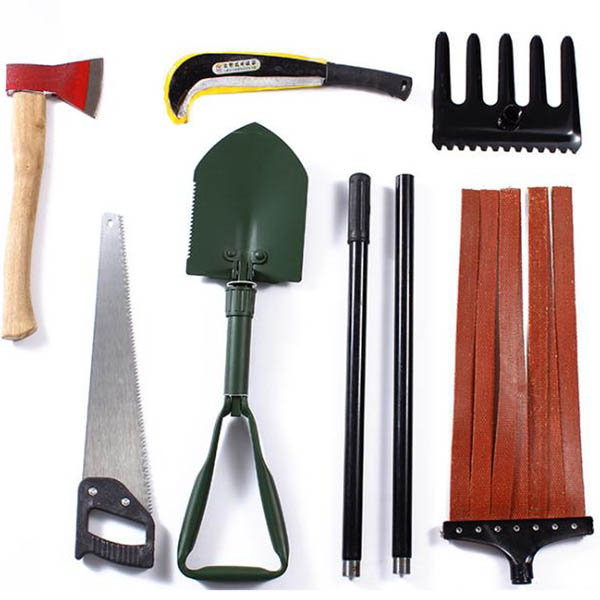
Vendor Comparison: Selecting the Right Fire Fighting Knapsack
Choosing the appropriate Fire Fighting Knapsack requires a careful, data-driven evaluation of various vendors and their product offerings. While many provide similar fundamental functionalities, critical distinctions in material quality, pump efficiency, ergonomic design, compliance with international certifications, and post-sales support can significantly impact operational effectiveness, user safety, and the total cost of ownership over the product's lifespan. Below is a comparative analysis highlighting typical distinctions among different vendor types.
| Feature/Vendor Type | Premium/Specialized Vendors | Standard/Mass Market Vendors | Key Considerations for B2B Buyers |
|---|---|---|---|
| Tank Material & Construction | High-grade, UV-stabilized, heavy-duty HDPE or advanced composite materials (e.g., polyamide-based), seamless roto-molded design. | Standard HDPE, potentially thinner gauge, less robust UV protection, or simpler blow-molded construction with potential seams. | Long-term durability in direct sunlight, resistance to impact, and chemical compatibility are paramount. |
| Pump Mechanism & Materials | Precision-machined brass or high-grade stainless steel (e.g., SS316) internal components with easily replaceable, durable seals. Often features double-action pump for continuous flow. | Standard brass/plastic mixture, simpler piston designs, less robust seals, typically single-action pump, prone to wear. | Pump longevity, consistent pressure delivery, ease of repair/maintenance, resistance to dirty water, and operator fatigue. |
| Harness System & Ergonomics | Advanced ergonomic design with thick, contour-padded, fully adjustable shoulder straps, chest strap, and robust waist belt. Often includes breathable back panels. | Basic adjustable webbing straps, minimal or no padding, less effective load distribution. | Operator comfort during extended operational periods is critical for productivity and safety. |
| Certifications & Compliance | ISO 9001, CE marking, and compliance with specific regional fire safety standards (e.g., relevant aspects of NFPA guidelines or national fire codes). | May have basic internal quality checks; fewer internationally recognized external certifications. | Assurance of product quality, safety, and adherence to regulatory requirements for operational peace of mind. |
| Warranty & After-Sales Support | Extensive warranty (e.g., 2-5 years), comprehensive spare parts availability, dedicated technical support, and potentially maintenance training. | Limited warranty (e.g., 1 year), basic parts availability, often slower or less specialized support. | Impacts long-term operational costs, potential downtime, and the ease of maintaining equipment readiness. |
| Price Point | Higher initial investment, but typically lower Total Cost of Ownership (TCO) due to superior durability, reliability, and longer lifespan. | Lower initial investment, but potentially higher TCO due to more frequent repairs, replacements, and operational inefficiencies. | Balancing immediate budget constraints against long-term value, reliability, and critical safety performance. |
For discerning B2B buyers, prioritizing reliability, robust durability, and optimal operator comfort invariably outweighs marginal initial cost savings. This is particularly true in critical fire safety applications where equipment failure carries significant risks. Vendors offering products certified by reputable international bodies and backed by strong service commitments typically provide superior long-term value and enhanced operational safety.
Customized Solutions for Specific Needs
Recognizing that "one size fits all" rarely applies to highly specialized B2B fire safety equipment, leading manufacturers offer extensively customized Fire Fighting Knapsack solutions. These are meticulously tailored to meet the precise operational requirements and unique environmental challenges faced by different industries and professional response teams. Customization options can include:
- Variable Tank Capacity and Specialized Materials: Options for larger or smaller tank volumes to balance water carrying capacity with extended portability. Specialized tank materials (e.g., enhanced chemical-resistant polymers or marine-grade composites) can be offered for use in highly corrosive environments, such as those near saltwater or for carrying specific chemical suppressants.
- Diverse Pump Configurations: A choice between high-pressure piston pumps for maximum throw and penetration, durable diaphragm pumps renowned for their resistance to dirty water and minimal maintenance, or even compact battery-powered pumps for reduced operator effort and sustained, consistent pressure delivery.
- Advanced Nozzle and Hose Systems: Selection of specialized nozzles designed for precise spray patterns (e.g., ultra-fine fog for rapid cooling, narrow jet for deep penetration, or wide fan for protective curtains). Options for varying hose lengths, materials (e.g., abrasion-resistant or high-flexibility), and quick-connect fittings.
- Ergonomic Enhancements and User-Specific Harnesses: Development of customized harness designs, additional high-density padding, advanced lumbar support systems, or quick-release mechanisms. These are tailored to meet the unique physiological needs of diverse user groups or optimize comfort during exceptionally long operational periods.
- Integrated Auxiliary Features: Incorporation of dedicated foam inductors for seamless Class A or Class B foam application, highly accurate pressure gauges, quick-fill ports for rapid replenishment, or even specialized internal filtration systems for safely drawing water from natural, unfiltered sources.
- Color Coding, Branding, and Visibility Elements: Custom color schemes for departmental or team identification, prominent corporate branding, and the integration of highly visible reflective strips or markings for enhanced safety and recognition in low-light conditions or dense smoke.
By actively collaborating with experienced manufacturers, organizations can procure Fire Fighting Knapsack units that are precisely optimized for their unique operational profiles. This strategic approach maximizes efficiency, significantly enhances safety for personnel, and ensures that specialized equipment performs optimally in its intended role.
Application Case Studies
Case Study 1: Wildland Fire Containment in the Pacific Northwest
A regional forestry department operating in the rugged, mountainous terrain of the Pacific Northwest faced persistent challenges with hot spots reigniting after initial suppression efforts, particularly in dense, remote forest areas. Their existing portable equipment proved heavy and cumbersome, severely limiting the agility and reach of their ground crews. The department strategically adopted a new fleet of 20L Fire Fighting Knapsack units, specifically chosen for their lightweight composite tanks, ergonomic harness systems, and high-efficiency double-action brass pumps. These units were integrated into their standard mop-up and patrol protocols.
Outcome: Over the subsequent challenging fire season, the forestry department reported a quantifiable 30% reduction in reignitions within targeted post-fire areas. Qualitative feedback from crew members consistently highlighted the significantly improved mobility and reduced physical fatigue, which allowed teams to sustain longer operational periods and perform more thorough mop-up work in difficult-to-reach locations. A veteran crew leader remarked, "The new knapsacks fundamentally changed our ground game. They allowed us to access deeply embedded hot spots that traditional equipment couldn't reach quickly, and the ergonomic design meant our team could work longer and more effectively, truly making a measurable difference in overall fire containment and safety."
Case Study 2: Industrial Safety in a Large Petrochemical Plant
A major petrochemical complex, with stringent safety regulations and inherent fire risks, implemented a series of specialized Fire Fighting Knapsack units equipped with Class A foam injectors as a critical component of their advanced internal fire response protocols. These units were strategically deployed and easily accessible throughout the expansive facility, particularly near high-risk processing units, volatile storage tanks, and active hot work zones, to enable immediate response to small hydrocarbon fires or incidental ignitions.
Outcome: In a specific incident involving a small spill fire during routine maintenance of a distillation column, a trained safety technician was able to quickly don and deploy a knapsack unit within 45 seconds of detecting the anomaly. The integrated foam inductor allowed for instant mixing and precise application of specialized Class A foam, leading to rapid and highly effective suppression of the hydrocarbon fire. This swift action successfully contained the incident before it could escalate, preventing activation of larger, more disruptive plant-wide fire suppression systems and minimizing operational downtime. The plant manager lauded the system, stating: "The rapid response capability and specialized foam delivery of these knapsacks prevented what could have been a minor incident from becoming a major operational disruption, significant asset damage, and a potential safety hazard. It’s a clear demonstration of excellent ROI through enhanced safety and business continuity."
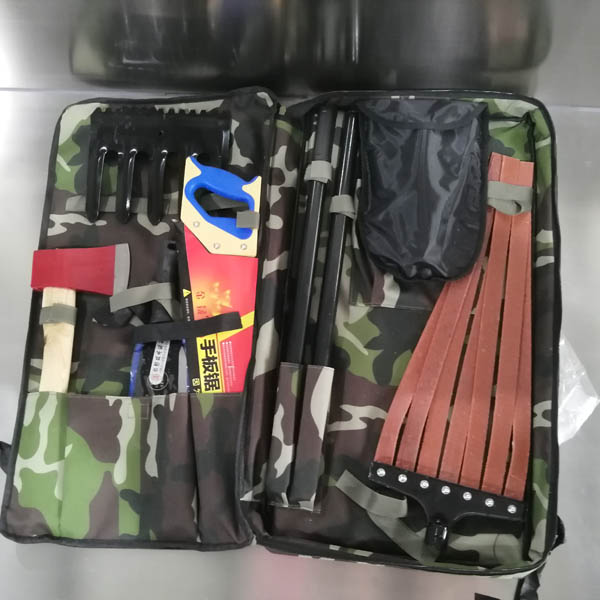
Frequently Asked Questions (FAQ)
Q1: What is the typical effective range of a standard Fire Fighting Knapsack?
A1: The effective throw range of a standard Fire Fighting Knapsack typically varies between 8 to 12 meters (26 to 39 feet) for a concentrated solid stream, and 3 to 5 meters (10 to 16 feet) for a wider fog or spray pattern. This range is optimally designed for immediate perimeter control, targeted direct attack on small to medium-sized ground fires, and personal protection, depending on the pump type and specific nozzle configuration.
Q2: Can the knapsack be used with fire retardant additives or foam concentrates?
A2: Yes, many modern Fire Fighting Knapsack models are specifically designed to be fully compatible with Class A foam concentrates or other non-corrosive fire retardant additives. Certain advanced models feature integrated foam inductors or proportioning systems for precise and easy mixing of concentrates with water. It is crucial to always consult the manufacturer's recommendations and ensure that any additive used is compatible with the knapsack's tank and pump materials to prevent degradation or damage.
Q3: How often should a Fire Fighting Knapsack be inspected or serviced?
A3: Regular and thorough inspections are crucial for ensuring operational readiness. It is highly recommended to perform a comprehensive visual inspection before each use or deployment. A more detailed functional check and service should be conducted at least annually. This annual service includes checking for any signs of leaks, verifying optimal pump operation (pressure, flow), inspecting the hose and nozzle for damage or blockages, and ensuring all harness straps and buckles are intact and functional. Critical wear components like seals and O-rings may require replacement every 2-3 years, or more frequently depending on the intensity of usage. Always refer to the specific manufacturer's comprehensive maintenance schedule for precise guidelines.
Q4: What are the primary differences between piston and diaphragm pumps in these units?
A4: Piston pumps generally deliver higher pressure and greater flow rates, making them particularly effective for achieving longer throw distances and for direct attack operations requiring significant force. Diaphragm pumps, conversely, are typically more robust and tolerant of dirty or unfiltered water sources (less prone to clogging) and often require less maintenance on moving parts, making them ideal for drawing water from natural, often less-than-pristine, sources. The choice between pump types heavily depends on the anticipated operational environment and the desired performance characteristics for specific firefighting tasks.
Lead Time & Fulfillment
Our standard lead time for the majority of our Fire Fighting Knapsack models is typically 4-6 weeks from the official order confirmation. This timeframe is subject to current inventory levels, the specific product configuration ordered, and overall order volume at the time of purchase. For large bulk orders, highly customized solutions, or specialized units, lead times may extend to 8-12 weeks to accommodate the intricacies of specialized manufacturing processes, rigorous quality assurance checks, and logistical planning. We diligently maintain robust inventory levels of our most popular models and essential spare components to facilitate prompt fulfillment and minimize delays. Expedited shipping options are available upon request and are quoted on a case-by-case basis, depending on destination and urgency. Our dedicated logistics team works tirelessly to ensure timely, secure, and compliant delivery to your specified destination, whether domestic or international, adhering to all relevant shipping regulations and best practices.
Warranty & After-Sales Support
We maintain an unwavering commitment to the superior quality and robust performance of our products. Each Fire Fighting Knapsack unit sold is backed by a comprehensive 2-year limited warranty, specifically covering manufacturing defects in materials and workmanship. This warranty period commences from the original date of purchase, underscoring our confidence in our engineering and our dedication to ensuring customer satisfaction and long-term product reliability.
Our dedicated after-sales support team comprises highly trained technical specialists who are readily available to assist with any technical inquiries, advanced troubleshooting, or efficient procurement of spare parts. We offer a complete range of genuine replacement parts, including durable hoses, precision nozzles, essential pump repair kits, and robust harness components, ensuring the sustained longevity and continuous operational readiness of your critical equipment. Furthermore, detailed user manuals, comprehensive training resources, and expert guidance are provided to ensure optimal utilization, effective field maintenance, and maximum operational lifespan of your Fire Fighting Knapsack. For swift warranty claims, immediate technical assistance, or parts inquiries, please do not hesitate to contact our dedicated support desk via phone or email, as prominently detailed on our official website.
Citations
- Grand View Research. (2022). Portable Fire Extinguisher Market Size, Share & Trends Analysis Report By Product, By Fire Type, By Application, By Region, And Segment Forecasts, 2022 - 2030. Available at: https://www.grandviewresearch.com/industry-analysis/portable-fire-extinguisher-market
- National Fire Protection Association (NFPA). NFPA 1901: Standard for Automotive Fire Apparatus. (Relevant for general fire equipment design principles and safety aspects, though not specifically for knapsacks). Available at: https://www.nfpa.org/codes-and-standards/all-codes-and-standards/list-of-codes-and-standards/detail?code=1901
- International Organization for Standardization (ISO). ISO 9001: Quality Management Systems – Requirements. Available at: https://www.iso.org/iso-9001-quality-management.html
- European Committee for Standardization (CEN). EN 1869: Fire blankets. (General fire safety equipment material standards and testing, contextually relevant for quality of fire safety products).
- Occupational Safety and Health Administration (OSHA). 29 CFR 1910.157: Portable Fire Extinguishers. (U.S. regulatory standards for fire suppression equipment). Available at: https://www.osha.gov/laws-regs/regulations/standardnumber/1910/1910.157









